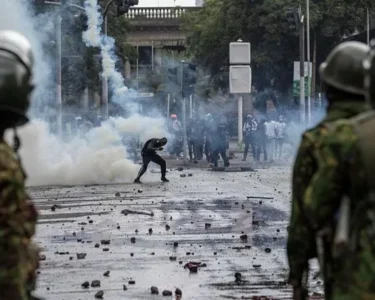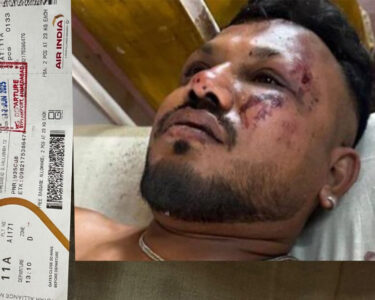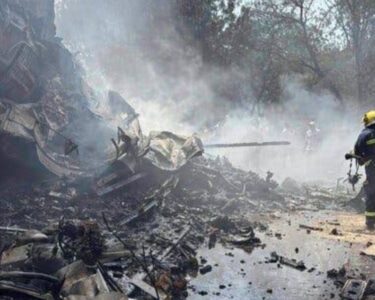At 5:30 am on 25 April 2003, the Darfur genocide arose when the Sudan Liberation Movement and the JEM, which is the largest rebel group in Darfur, entered Al-Fashir, the capital city of North Darfur and attacked the sleeping garrison.
However the Rebel leader Gibril Ibrahim said the reason behind the merging of forces is to defend their people “want to defend their civilians” from the RSF, which has been burying people alive” he said .
This comes after the paramilitary Rapid Support Forces (RSF) made major gains in Darfur, where it has been accused of ethnic cleansing.
He said the decision to join forces with the army was not an easy one.
The leader of the Justice and Equality Movement (Jem) said it had taken seven months to come to an agreement.
The relationship between Jem and the Sudanese army is fraught. Mr Ibrahim’s brother was killed by the army, who was previously the group’s leader.
Jem and the Sudanese Liberation Movement (SLM) took up arms in Darfur in 2003, accusing the government of marginalising the region’s black African communities.
The government then mobilised Arab militias against them, leading to what has been described as the 21st Century’s first genocide.
These militias have since transformed into the RSF, which has been fighting the army for control of the country since April.
The RSF has taken several key towns in Darfur in recent weeks, including the country’s second biggest city, Nyala.
Last week, there were reports they had massacred hundreds of people in the West Darfur capital of El Geneina.
The RSF has denied responsibility for the killings, saying they were part of a “tribal conflict”.
A joint statement from Jem and the SLM read: “We have announced ending any neutrality and joining the military operations at all frontlines without hesitation.”
Jem and the SLM are not as strong as they used to be, but their entry into the Sudanese civil war is significant.
Both Darfuri rebel leaders signed a peace deal in 2020, and have since been closer to the Sudanese military than would once have seemed possible.
It is possible JEM and SLM will see their ranks swell with new recruits – increasing their importance on the Sudanese political scene.
In joining the fray now – after months of professed neutrality – they seek to defend their support base in Darfur, in particular the Zaghawa ethnic group both men come from.
They will also have concluded that an RSF victory would be disastrous for them, and Darfur.
Mr Ibrahim expressed concern at the RSF’s advances, saying he feared Sudan would end up divided.
There are fears it could declare its own government in the impoverished war-torn western region.
The international dimension is significant too.
The Zaghawa are present in Chad as well as Sudan, and dominate Chadian politics. Mr Ibrahim and others have accused Chad of supporting the RSF.
He will be hoping that he can use his connections – including with Chad’s leader Gen Mahamat Deby – to cut any ties between Chad and the RSF.
At 5:30 am on 25 April 2003, the Darfur genocide arose when the Sudan Liberation Movement and the JEM, which is the largest rebel group in Darfur, entered Al-Fashir, the capital city of North Darfur and attacked the sleeping garrison.
However the Rebel leader Gibril Ibrahim said the reason behind the merging of forces is to defend their people “want to defend their civilians” from the RSF, which has been burying people alive” he said .
This comes after the paramilitary Rapid Support Forces (RSF) made major gains in Darfur, where it has been accused of ethnic cleansing.
He said the decision to join forces with the army was not an easy one.
The leader of the Justice and Equality Movement (Jem) said it had taken seven months to come to an agreement.
The relationship between Jem and the Sudanese army is fraught. Mr Ibrahim’s brother was killed by the army, who was previously the group’s leader.
Jem and the Sudanese Liberation Movement (SLM) took up arms in Darfur in 2003, accusing the government of marginalising the region’s black African communities.
The government then mobilised Arab militias against them, leading to what has been described as the 21st Century’s first genocide.
These militias have since transformed into the RSF, which has been fighting the army for control of the country since April.
The RSF has taken several key towns in Darfur in recent weeks, including the country’s second biggest city, Nyala.
Last week, there were reports they had massacred hundreds of people in the West Darfur capital of El Geneina.
The RSF has denied responsibility for the killings, saying they were part of a “tribal conflict”.
A joint statement from Jem and the SLM read: “We have announced ending any neutrality and joining the military operations at all frontlines without hesitation.”
Jem and the SLM are not as strong as they used to be, but their entry into the Sudanese civil war is significant.
Both Darfuri rebel leaders signed a peace deal in 2020, and have since been closer to the Sudanese military than would once have seemed possible.
It is possible JEM and SLM will see their ranks swell with new recruits – increasing their importance on the Sudanese political scene.
In joining the fray now – after months of professed neutrality – they seek to defend their support base in Darfur, in particular the Zaghawa ethnic group both men come from.
They will also have concluded that an RSF victory would be disastrous for them, and Darfur.
Mr Ibrahim expressed concern at the RSF’s advances, saying he feared Sudan would end up divided.
There are fears it could declare its own government in the impoverished war-torn western region.
The international dimension is significant too.
The Zaghawa are present in Chad as well as Sudan, and dominate Chadian politics. Mr Ibrahim and others have accused Chad of supporting the RSF.
He will be hoping that he can use his connections – including with Chad’s leader Gen Mahamat Deby – to cut any ties between Chad and the RSF.
For the past four years, the remote Sudanese region of Darfur has been the scene of a bloody conflict that has led to the death of thousands of people and the displacement of more than two million. The United Nations has described it as “the world’s worst humanitarian crisis” and the United States government called it “genocide.” The violence and destruction is often compared to the 1994 genocide in Rwanda.
These tragic events have riveted the international community and attracted unprecedented media attention. However, much of the media coverage tends to follow the familiar patterns of sensationalizing the story rather than providing a nuanced analysis of the root causes. The Darfur tragedy has often been reduced to pictures of miserable refugees living in squalid conditions and caricatured accounts of “Arabs” killing “Black African Muslims.” Moreover, much of the coverage tends to perpetuate the old (and easy) stereotypes about Africa as a continent that is uniquely afflicted by civil wars and instability.





